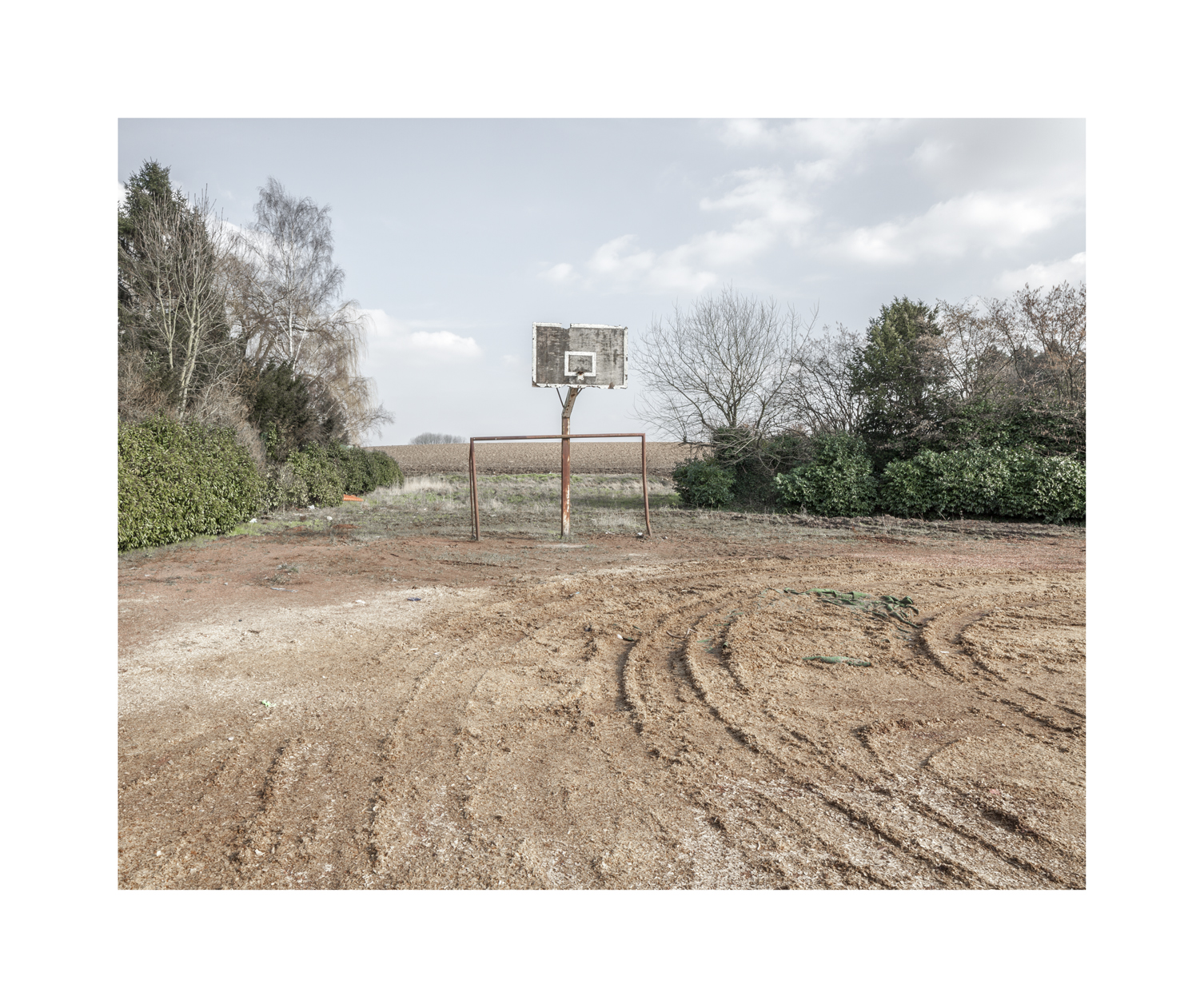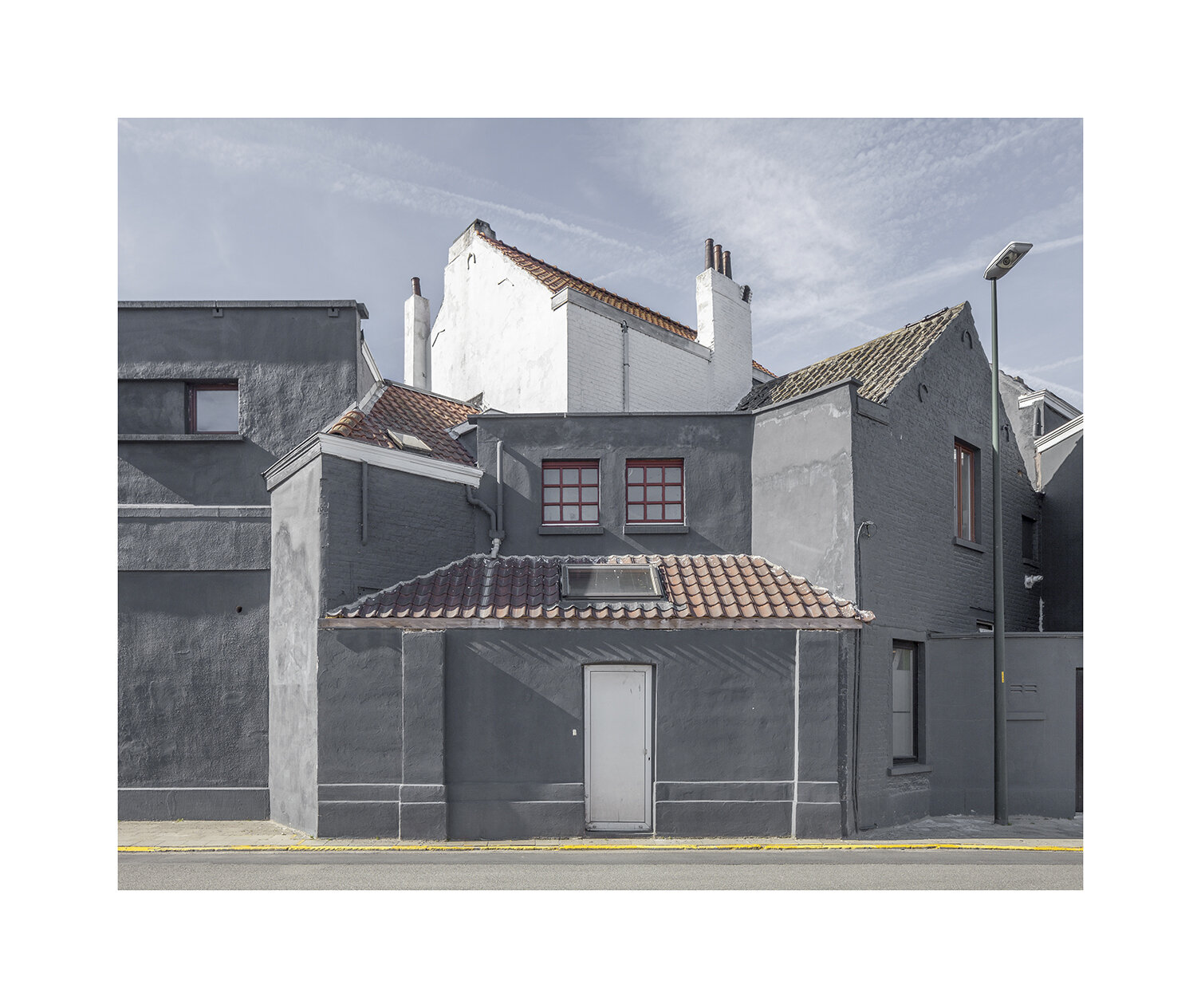belgopolis - °2016
First part of the representation of the building of an imaginary city
"After the concise series of black and white images a broader view emerges; a more relaxed and colourful play in which D’Haese continues to scrutinize the regulated landscapes. This need to dissect the city’s structure is reflected in the search for knowledge concerning the surroundings and its elements, in the dissection of the hidden, the absent and the dysfunctional, in such a way that is comparable to Democritus who poked his own eyes out to gain a more profound insight. The end result is a fictional city called ‘Belgopolis’. This working title is a reference to the demarcated territory, Belgium, which in the course of time will probably expand to other countries. Paul considers this to be a long-termproject, which will ultimately encompass his mental universe, his own city of the blinds. It’s a personal interpretation of the paradox of photography and deviates from the contemporary approach.”
Dieter Debruyne, excerpt interview, Oct. 2016 @ Urbanautica
'Belgopolis' was exhibited @ Hangart Art Center, 18, Place du Châtelain, 1050 Brussels, Belgium.
PhotoBrussels Festival, edition 03, from November 16th > December 20th, 2018.
Belgopolis
This project was singled out for distinction among the submissions to Magnum Photography Awards 2016 by juror Stacey Baker. Each juror selected one photographer—discover why this one stood out.
Paul D'Haese, like many photographers, is an introverted person. An interior architect by trade, his view of the world is dominated by simplicity and an austere visual clarity that comes only from careful (and distanced) deliberation of the world.
In his work, we find echoes of such quiet masters as Dirk Braeckman, Stephen Shore (and many of the other New Topographics). His latest project, tentatively titled "Belgopolis," consists of a single photo of every town and city in Belgium, 133 in total. Using his camera, he is steadily producing an "imaginary city," a "big surreal whole' of the country he calls home.
Despite the unflinching manner with which D'Haese looks at his surroundings, the photographer firmly emphasizes he has no intention of creating a unified picture of Belgium. Rather, the themes he purses are universal and Belgium merely serves as a temporary boundary. Wherever D'Haese goes to pursue the work, he will be uninterested by questions of urbanization, documentation or objectivity—rather, "an interpretation of my direct environment."
Similarly, although D'Haese ceaseless traverses urban spaces, D'Haese feels little connection with the genre of street photography. As he told us, "My work has nothing to do with the decisive moment at 1/1000th of a second. Instead, I go for long walks, 3 to 4 hours, in each place, producing only 1 or 2 images. When I find the right setting, I wait for the scene to be complete: clouds or no clouds, an absence of people, the right light and so on. Walk, think, look, wait, decide. Often, I have to come back again, with better conditions and a tripod, to make the picture. Finally, I click, perhaps for ½ a second. It’s certainly a slow manner of working."
In the long run, D'Haese believes that the project will be extended. Although the body work is already enormous, these photos represent perhaps only 10% of "what should be" in the project. So, D'Haese will carry on, walking, thinking, looking and, occasionally, shooting.
Alexander Strecker, Lensculture
Juror's statement:
If we were to look really carefully at the everyday world around us, we might see what Paul D'Haese sees: sculpture. Or we might not—which is what makes his pictures so striking. He unfamiliarizes familiar landscapes. His is the world I want to walk through.
Stacey Baker, Photo Editor
New York Times Magazine
New York, USA









